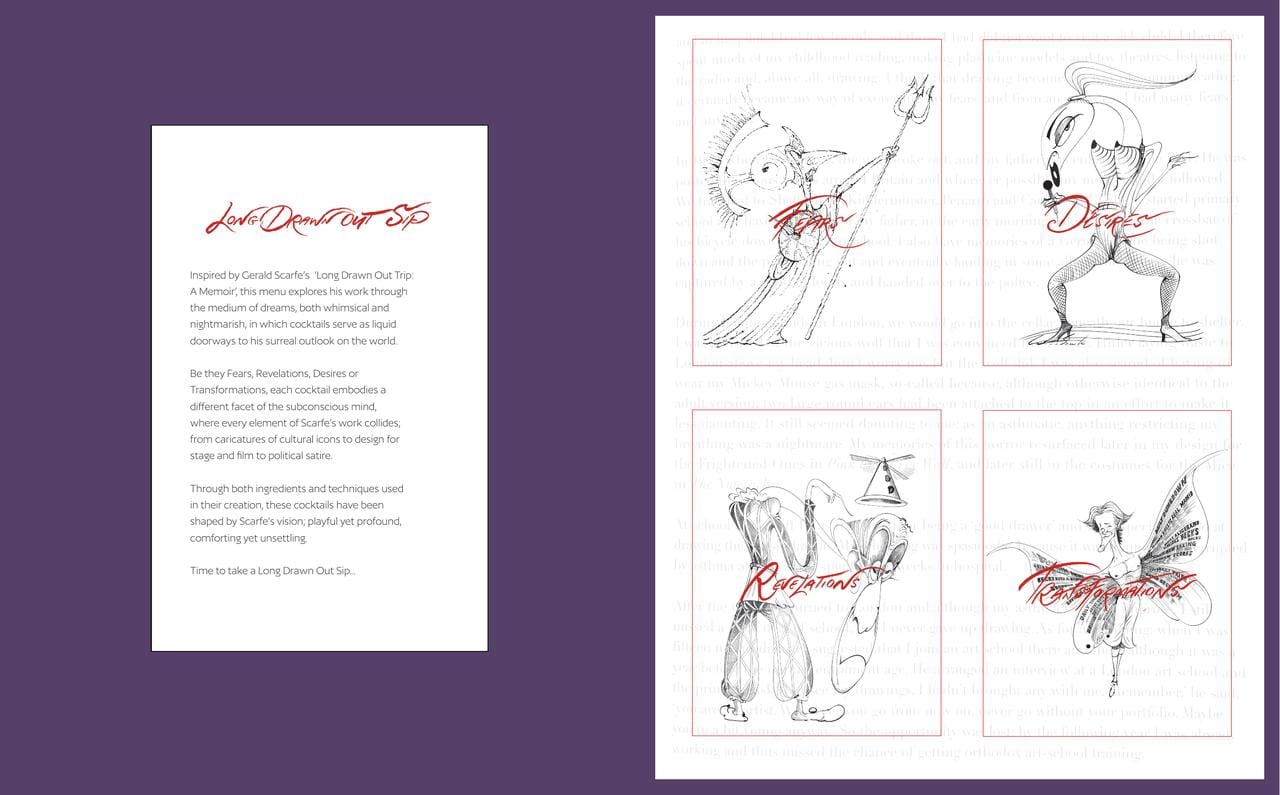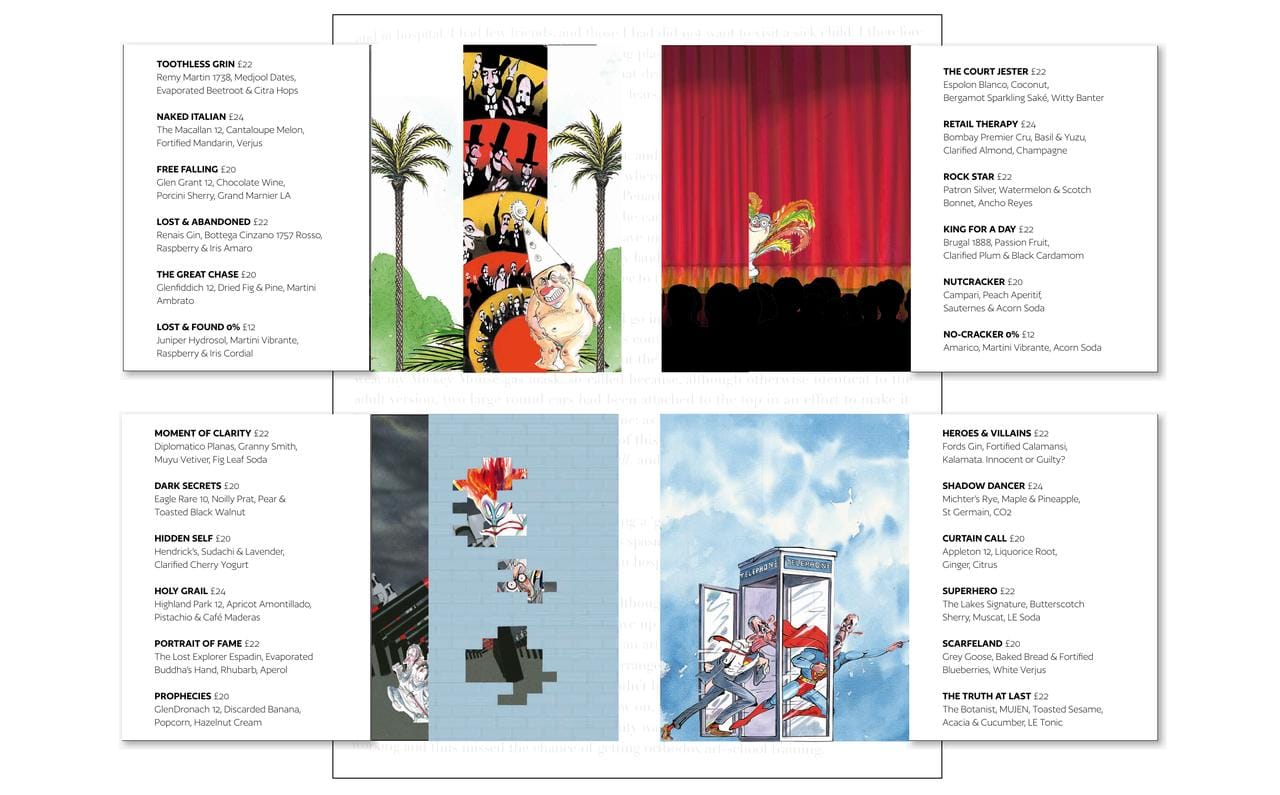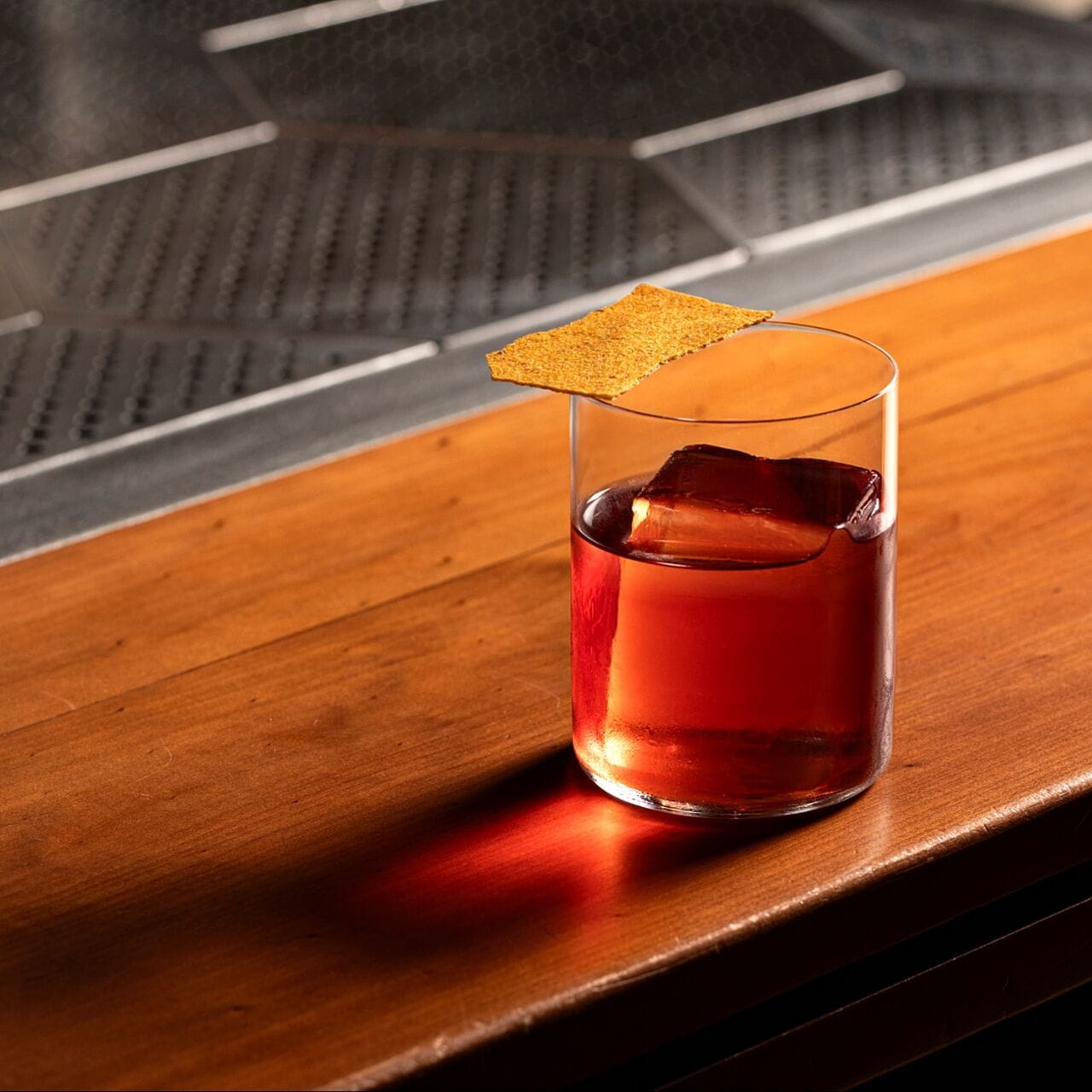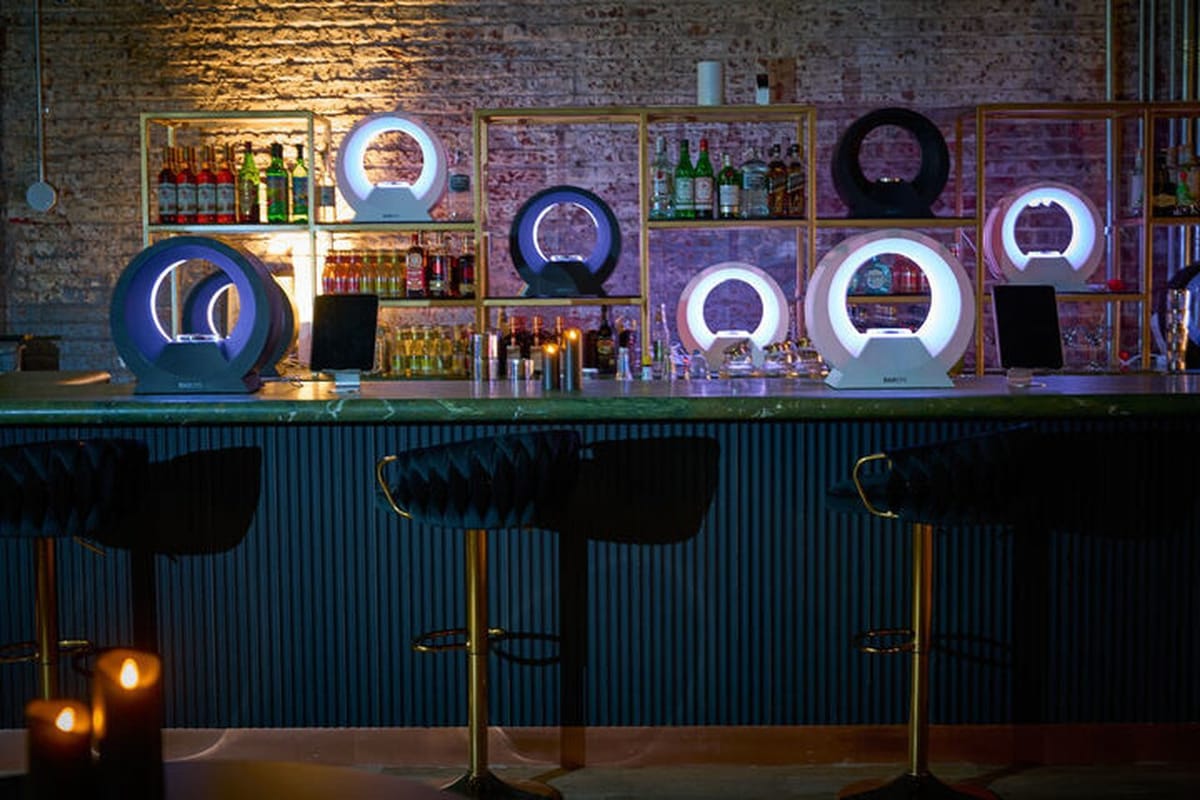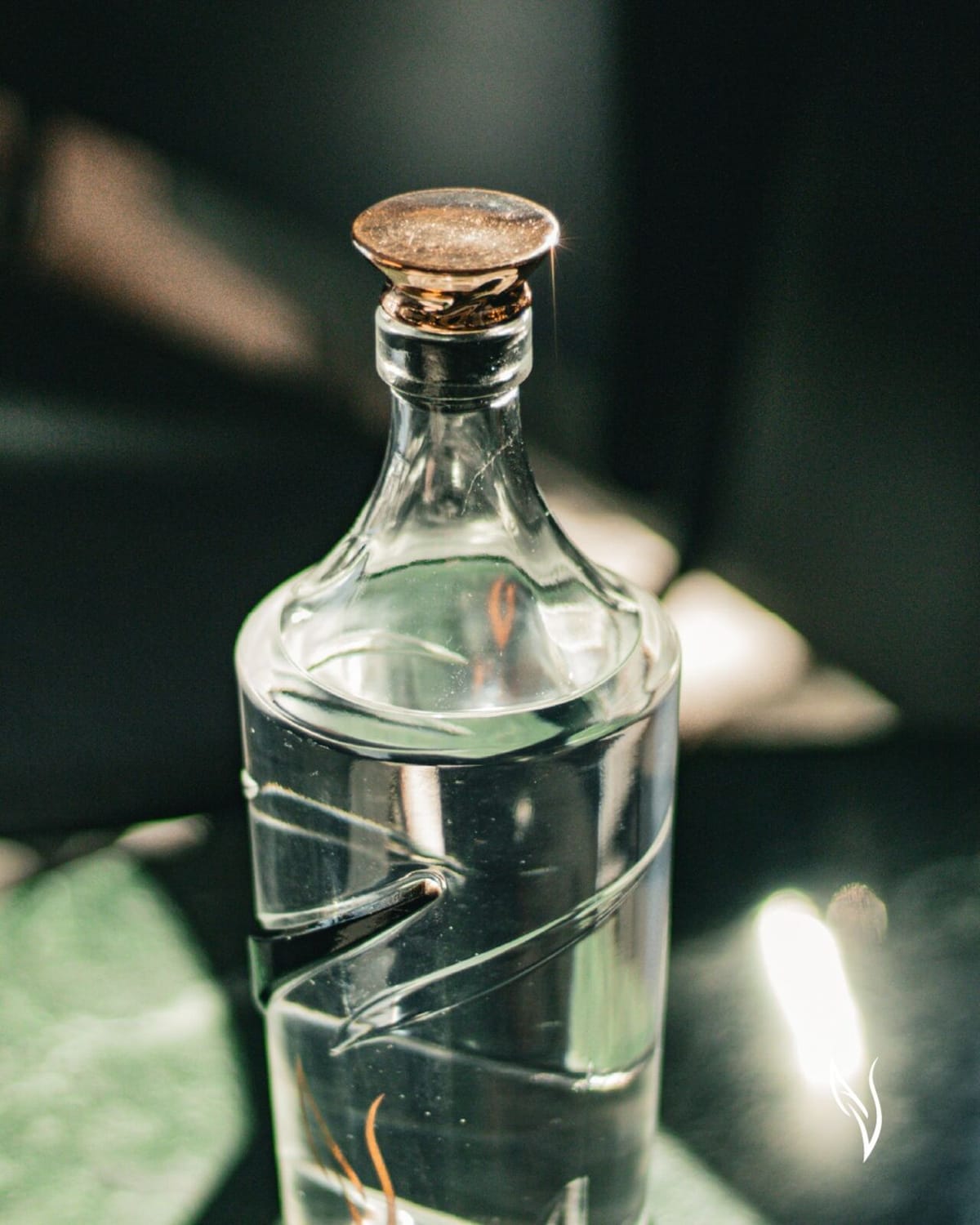Andy Loudon (Scarfes Bar) : "In a world where independent bars are pushing boundaries, hotel bars need to stay relevant by being just as creative and expressive"
After a decade abroad mastering his craft across four continents, Andy Loudon returned to London as Scarfes Bar's new creative force last summer. Today, he shares with Jigger Daily the inspiration behind his debut menu there and offers candid insights on the city's evolving cocktail bar scene.
Could you introduce Scarfes bar's new menu, Long Drawn Out Sip?
Long Drawn Out Sip is our most personal menu at Scarfes Bar to date, a deep dive into the life and mind of Gerald Scarfe, whose work gives Scarfes Bar its soul. The inspiration came directly from Gerald’s autobiography, Long Drawn Out Trip, and from the moment I joined Rosewood London, I knew I wanted to immerse myself fully in his world. I bought every book, watched every documentary, and studied his television work because to create something authentic, the references had to be lived in. Scarfe isn’t just a name above the door; he’s the lens through which we should view everything about our program.
The menu reimagines Scarfe’s life as a surreal dreamscape, broken down into four themes, "Fears", "Desires", "Revelations", and "Transformations". Each drink is a chapter, a moment, a visual translated into flavour. We didn’t want to create a menu that just nodded to his work, we wanted it to feel like an extension of it. This is played out from the first chapter of Gerald’s autobiography entitled "Nightmares" to the first sections of our cocktail menu "Fears". The result is a cocktail list that’s both theatrical and introspective, playful and precise. It’s designed to surprise you, to draw you in, and to invite guests to engage with the menu in the same way they might engage with a gallery or a good book: slowly, curiously, and with imagination.
In your opinion, is it important to have a conceptual or thematic cocktail menu? Would you say it’s even more essential for a hotel bar?
It depends entirely on the venue. Not every bar needs a conceptual menu. But at Scarfes Bar, our story is already baked into the walls, Gerald Scarfe’s art is everywhere, and guests walk into a space that is defined by a very specific point of view. For us, the cocktail menu must be in sync with that world. If it tells a completely different story, we are missing an opportunity to build something immersive and connected.
When used well, a conceptual menu isn’t just a creative exercise, it’s a bridge. It lets you guide the guest into a deeper experience. But that only works if the story is honest to the venue, the team, and the guest.
As for hotel bars, I don’t think they are more in need of a theme than any other bar. What they do need is purpose. A strong identity. Too often, hotel bars rest on legacy. But in a city like London, where competition is high and expectations are higher, that’s not enough.
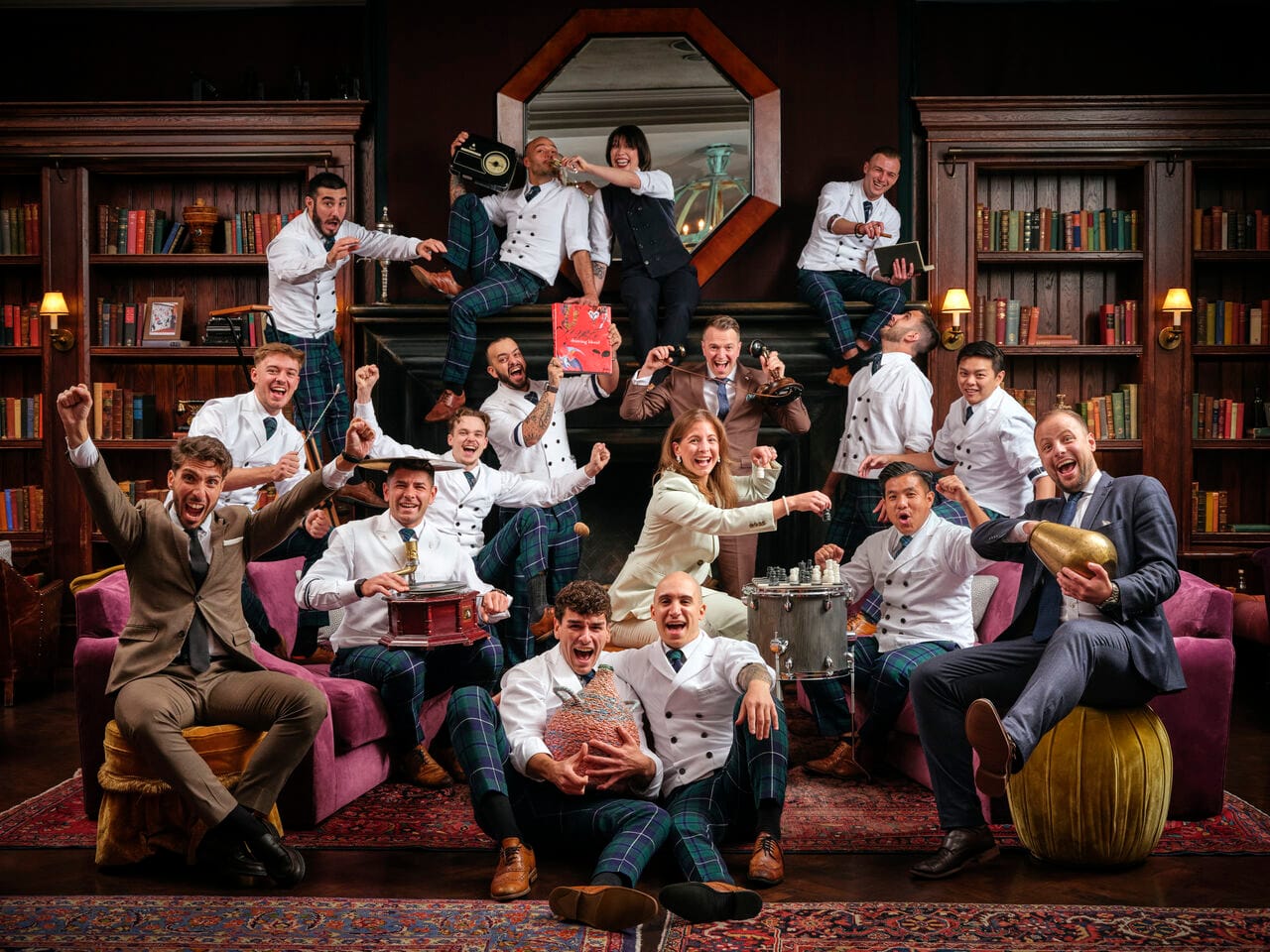
This is your first menu at Scarfes Bar. How did you work with the team on creating the cocktails? What was the dynamic like, and how were responsibilities divided?
After accepting the role at Rosewood London, the first thing I did was buy every single piece of work Gerald Scarfe had ever published. I watched the documentaries, the interviews, the TV shows. If Scarfes Bar is built around the world of Gerald, then that world should be our north star. His lens needed to shape not just the drinks but the feeling behind them, the tone, the edges, the contradictions.
Once that groundwork was laid, the rest came through collaboration. The narrative structure of the menu provided the creative pillars. From there, the team dynamic was open and honest. Some drinks began with artwork, others from a line in his autobiography, or a feeling we wanted to translate into flavour. The team, Kris, Nora (author's note: Kristijonas Bazys, bar manager & Nora Foldvari, assistant bar manager), and everyone involved, brought their ideas forward, and we have developed them collectively. Some were nearly there from the first build; others took weeks of testing, tweaking, and tearing apart.
We kept things fluid but structured. Weekly tastings, constant dialogue, and full transparency around what was working and what wasn’t. We didn’t rush any of it.
The goal was for every drink to feel like it had purpose, rooted in story, technically sound, and expressive of Gerald’s world. Every detail, from the glassware to the final garnish, was questioned. That level of care only happens when everyone feels ownership, and that’s exactly what we built.
How do you approach building a new menu? Do you follow certain guidelines ?
For me, every menu must start with a point of view. At Scarfes Bar, that point of view is Gerald himself. His lens, his legacy, his way of seeing the world, these are what anchor everything we do. From there, it’s about building a framework that gives the team both direction and freedom. For Long Drawn Out Sip, we divided the menu into four dreamlike themes, "Fears", "Desires", "Revelations", and "Transformations", which gave us emotional and creative parameters to work within.
Once the thematic structure is clear, I look at style and function. We need drinks that work across service styles, moods, and moments, some shaken, some stirred, a couple of longer builds, something served straight from the freezer. I’m not overly prescriptive on having "one of each", but the list should feel balanced without looking like it’s ticking boxes.
Sometimes a drink starts with a flavour I can’t shake, maybe an ingredient I came across while travelling or something seasonal that feels like it deserves its moment. Other times it’s about a feeling or an image. With this menu, a lot of it started with Scarfe’s art or writing, something visual or emotional that we then translated into taste. From there, we work until the drink earns its place, both on the menu and in the wider story we’re trying to tell.
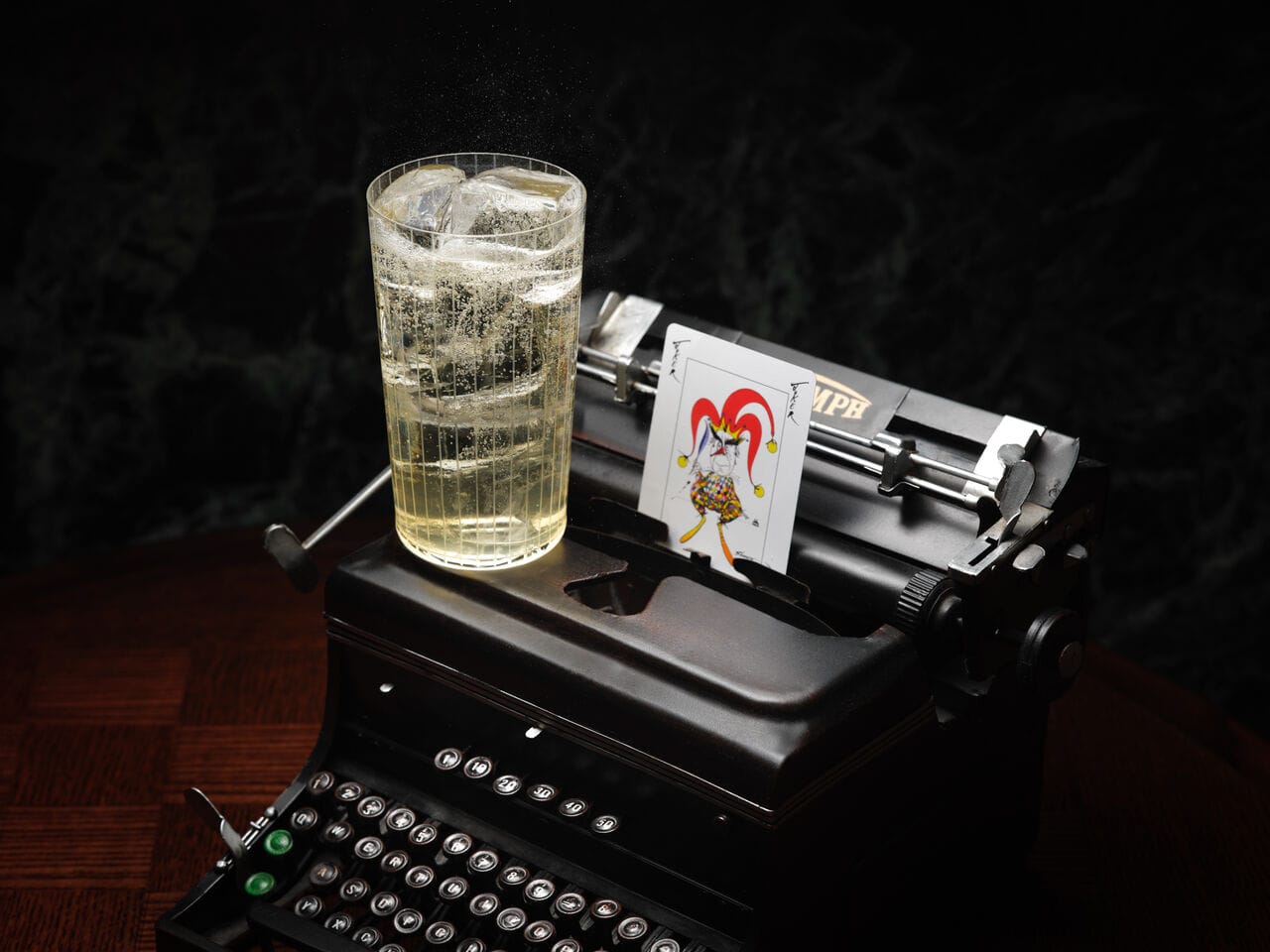
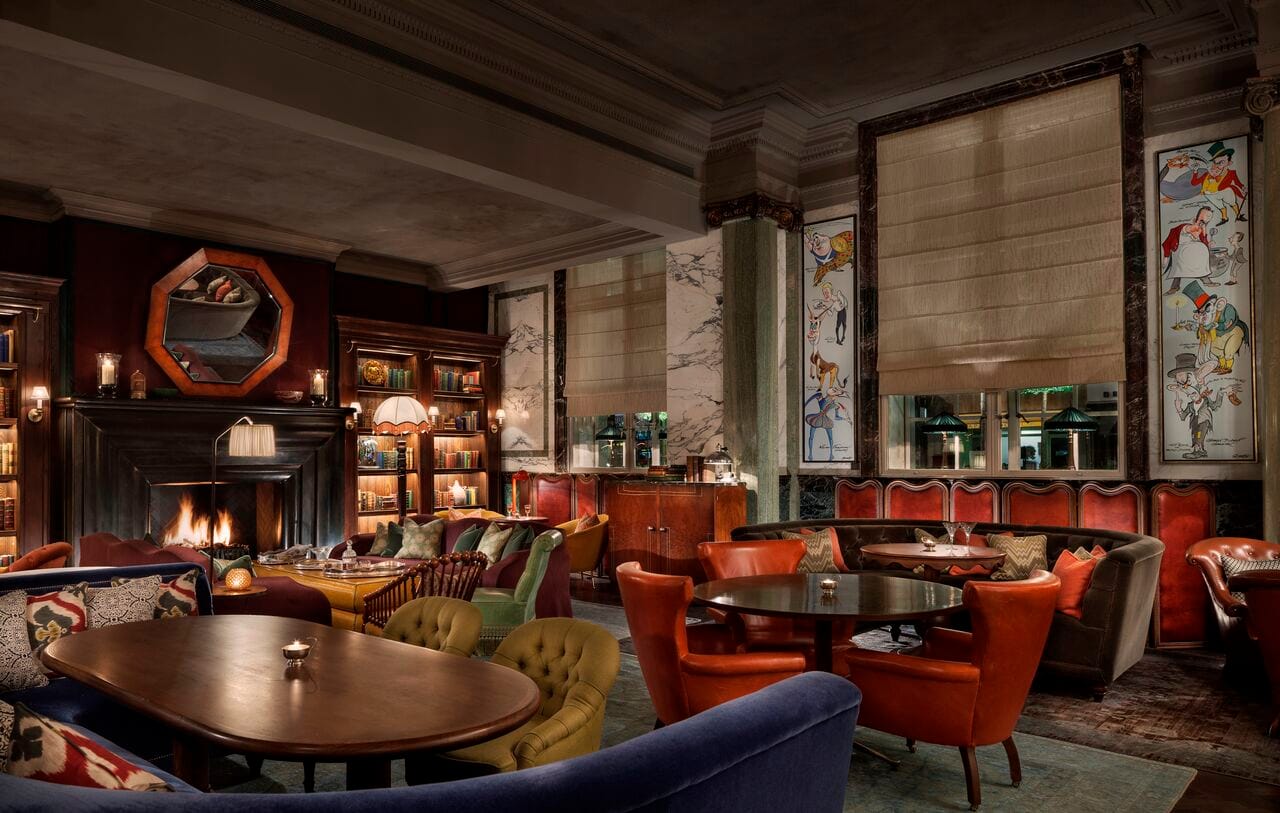
This is the first time you’ve included non-alcoholic cocktails on the menu. What motivated the decision to change? And was it a particularly challenging process?
The decision to give non-alcoholic cocktails a proper place on the menu wasn’t a trend response but a natural extension of thoughtful hospitality. The demand is there. But more importantly, the expectation is there. People want non-alcoholic drinks that feel just as intentional and layered as their full-strength counterparts. The creative challenge is the same. Without alcohol or sugar as flavour carriers, we’ve had to work even harder to build complexity. It’s about structure, balance, and purpose. These drinks should feel no different in terms of quality, and every bit as considered as anything else we put across the bar.
I first started working with menus and venues that served non-alcoholic options over 14 years ago and placed my first one on a menu around eight years back. The turning point for me was during my time in the Caribbean, South America, and Australia. I fell in love with regional produce, not just spirits and wine, but the local fruits and herbs, and the way they could be used to pair with food and mood. That really came into its own when I moved into the fine dining space in Singapore. At lunch, I noticed a pattern: guests were either drinking still water or hot water, nothing that complemented the meal. We introduced non-alcoholic pairings built around flavour, balance, and progression. Almost immediately, the spend per guest went from $10 on water to $45 for two non-alcoholic cocktails. But more importantly, the guest experience improved. People felt seen.
It’s also your first experience working in a hotel bar. What specific challenges have you encountered compared to your previous roles?
While this is my first time working within the four walls of a hotel operation, it’s far from my first time engaging with the hotel bar world. I’ve been consulting on hotel bars since 2015, starting in London, then Melbourne, and later across Southeast Asia during my time with Proof Creative (author's note : the consulting division for bars and beverages of Proof & Company, a leading player in spirits distribution in the Asia-Pacific region, with offices in Hong Kong, Singapore, and Shanghai). That experience helped me understand how different the language, pace, and structure of hotel venues can be compared to independent bars. There are more layers, more stakeholders, and more moving parts to consider.
What prepared me most, though, was standing in boardrooms presenting full-scale bar concepts to hotel owners and executives. You get asked everything, from why you chose a particular glass to how a drink links back to brand narrative, to how your menu supports revenue targets. One of the more formative moments came during a pitch for a hotel project where I was completely grilled by an ownership group. Every element of the concept was picked apart. It forced me to articulate clearly, not just what we were building, but why each detail mattered. And that shaped how I now approach the operational side at Rosewood London.
I’ve worked on hotel projects for Rosewood before, including Sora in Phnom Penh, as well as for Four Seasons, Ritz-Carlton, Regent, and Waldorf-Astoria properties across Asia and further. That foundation has been incredibly useful in stepping into a more permanent role. It’s given me a strong appreciation for the broader ecosystem hotels operate within, how to maintain creativity without losing sight of structure, how to bring a sense of personality into a space that also must serve many different guest profiles. So, while the context has changed, the mindset is one I’ve been developing for a long time.
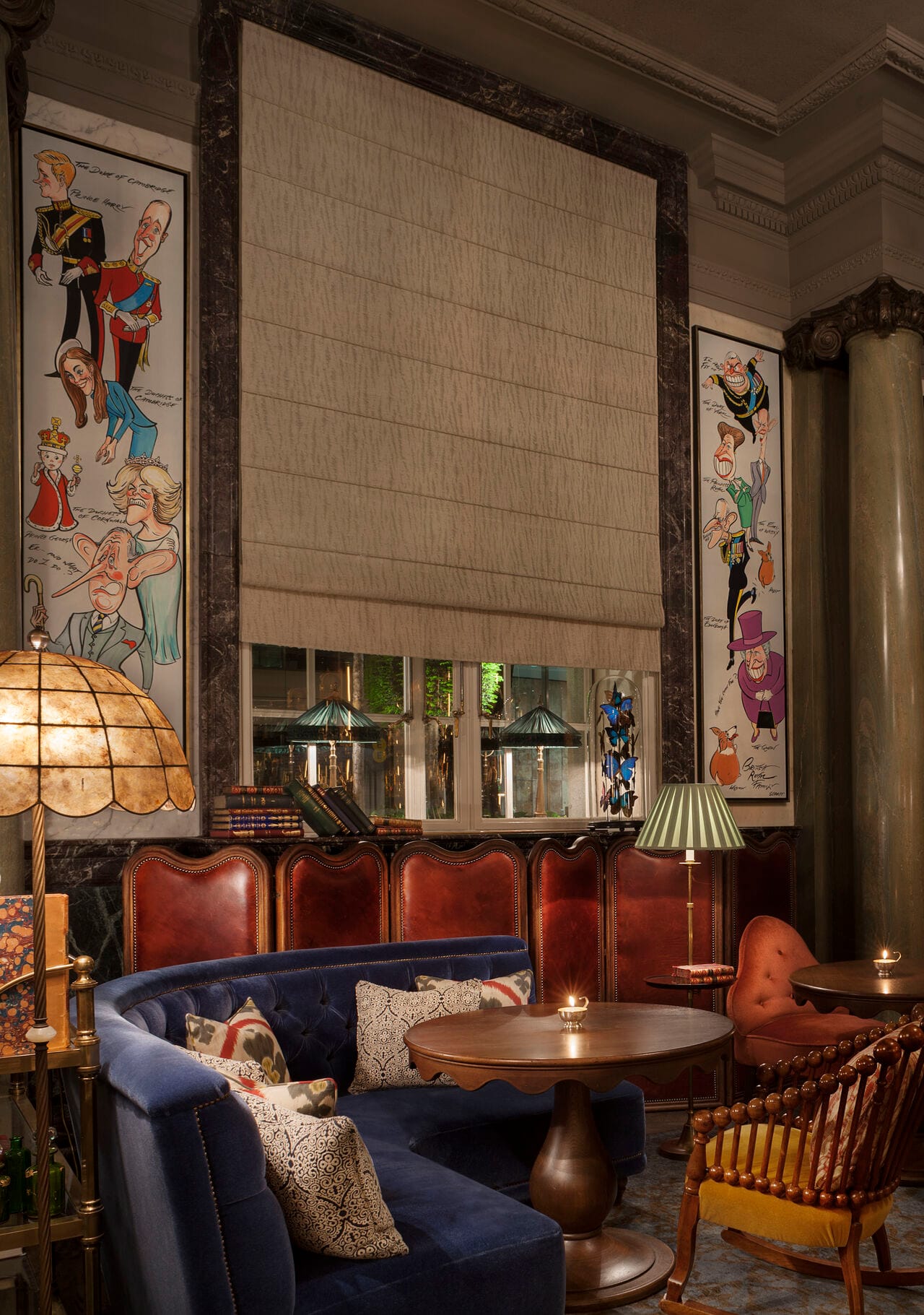

You spent several years in Singapore. What is your opinion on the cocktail scene there? What influences from that experience are you bringing to Scarfes Bar?
Although I’ve spent the better part of a decade away from the UK, my time was never based in one place. It started in the Caribbean, followed by stints in South America and Australia, and eventually led me across Asia, from Hong Kong to Singapore. My time in Singapore spanned just over six years, but its impact on how I approach drinks, creativity, and hospitality has been lasting.
One thing that really stood out to me in Singapore’s cocktail scene was its bold embrace of savoury profiles. There’s an unshakable confidence there, bartenders are comfortable leaning into umami, fermentation, and layered savouriness, often pulling from the region’s incredibly diverse culinary roots. It wasn’t about copying flavour combinations from the kitchen, it was about treating savoury ingredients with the same finesse and understanding we’d apply to a spirit. That influence is something I’ve introduced subtly into the program at Scarfes Bar.
It’s not about being overt, but about allowing those profiles to appear in thoughtful, unexpected ways, whether it’s a miso tincture, a fermented element, or a richer mouthfeel that holds a savoury note in place.
Singapore also taught me the value of storytelling. There, hospitality is elevated but unforced. Guests are curious and engaged, and as a result, the best bars in Singapore lean into detail, clarity, and intention. That ethos, clarity of purpose, and a lightness of touch, has made its way into how I work now. The drinks at Scarfes Bar might feel theatrical, but they’re not there to overwhelm. Every element has a role, every story a reason. That balance, I think, is something Singapore does incredibly well, and something I’ve carried forward with me.
How would you describe Singapore’s drinking culture, particularly in comparison with London?
Singapore’s drinking culture is more visually driven. Instagrammable drinks perform well there, and presentation plays a big role in how guests engage with the menu. That said, the approach isn’t shallow, it’s about how theatre and aesthetics can complement flavour. Drinks are often layered, deliberate, and detailed.
What’s also unique is the pace. Singapore’s drinking rhythm tends to be slower, more curated. Two cocktails per guest per night is the norm. People arrive later, take their time, and stay with the same drink a little longer. In London, it’s much faster paced. People drink quickly, move around more, and tend to spend longer out. There’s a sense of immediacy in London that drives a very different kind of service.
What I’ve taken from Singapore is that attention to detail. Even if the tempo in London is quicker, that doesn’t mean we shouldn’t treat every drink like a moment worth slowing down for.
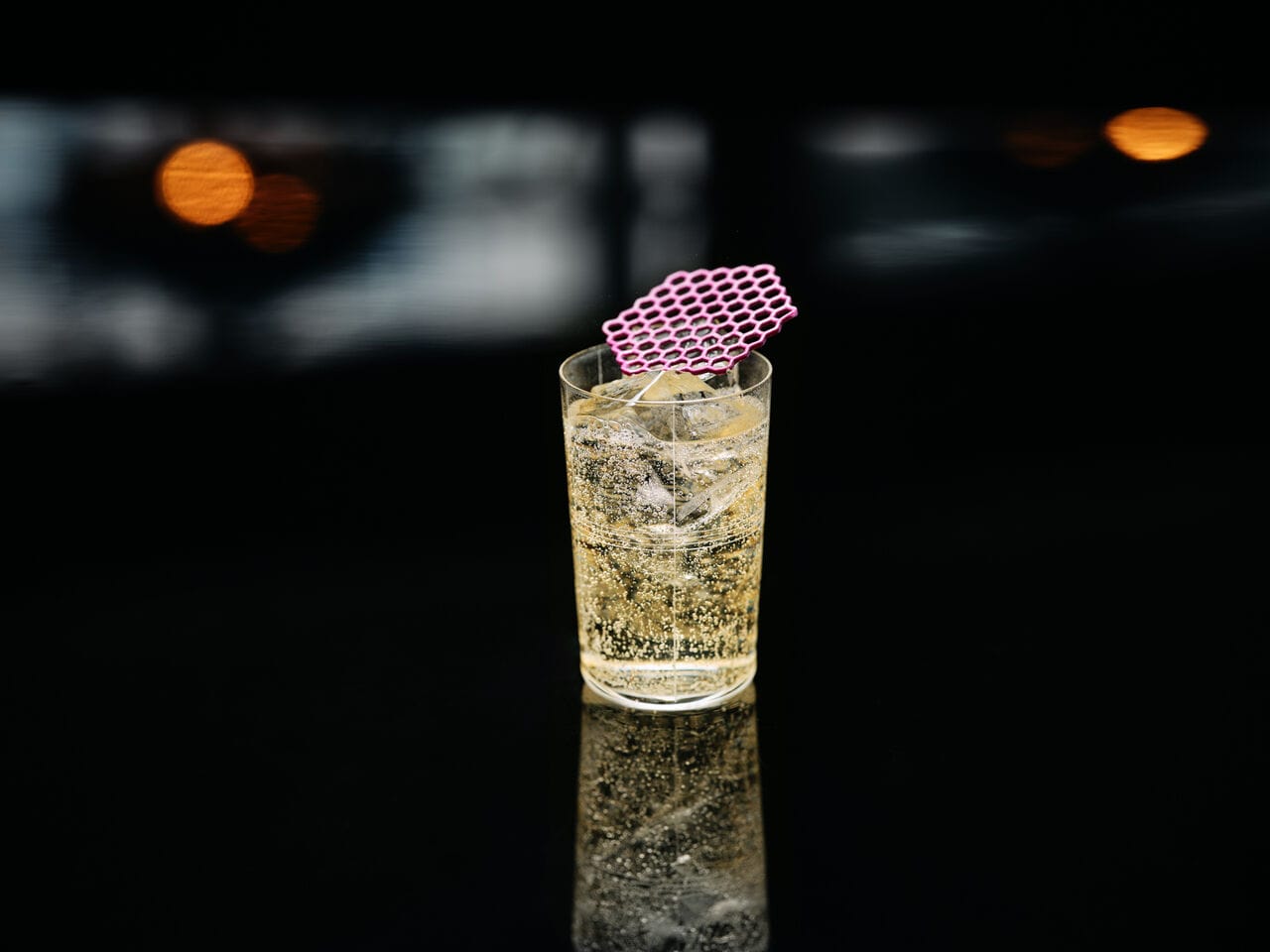
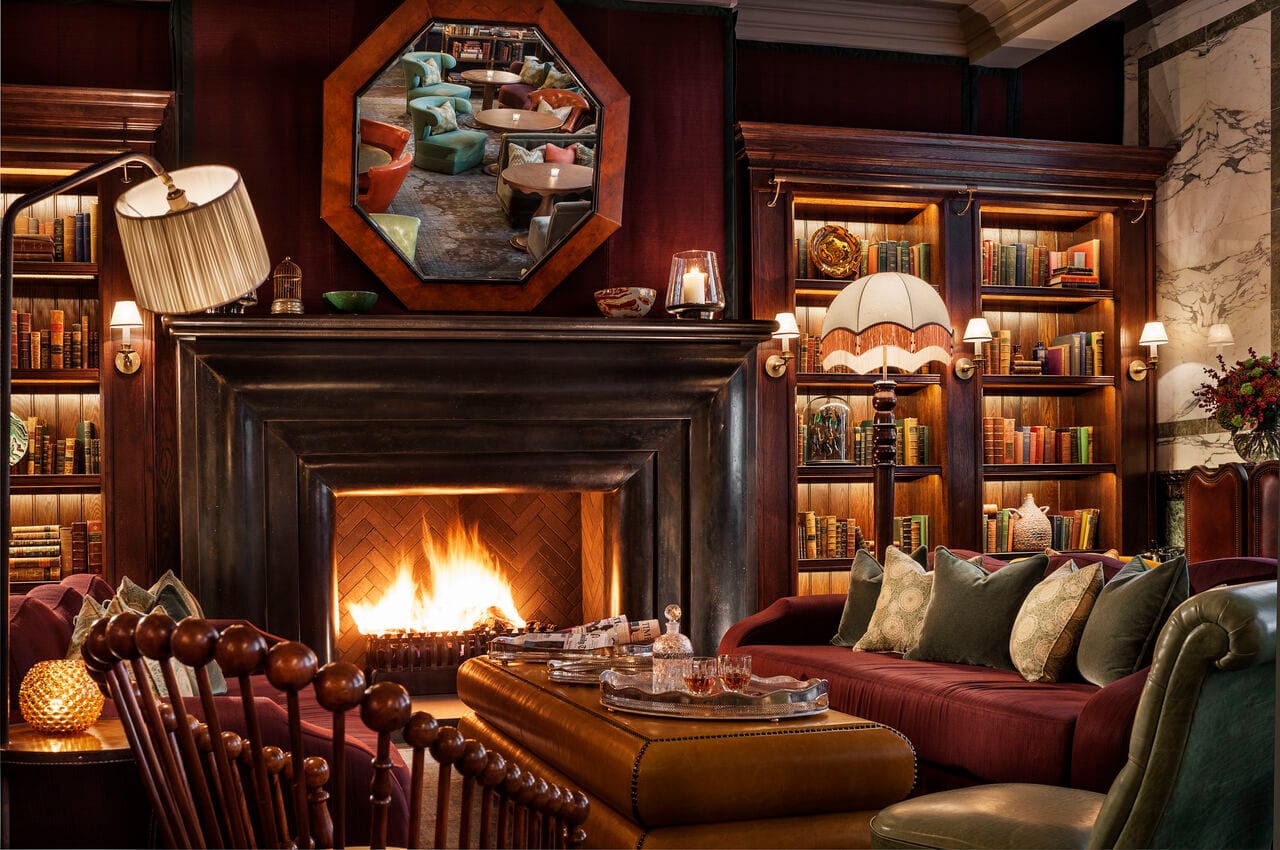
You’ve been away from London for ten years. How do you perceive the city’s cocktail scene since your return?
Cocktail culture has boomed worldwide, and London is no exception. You can get a decent drink almost anywhere now, which is a great thing on the surface. But with that rise in accessibility has come a bit of a drop in consistency.
There are more cocktails available, but fewer made well.
That’s not a criticism of the industry, it’s just a reflection of how quickly things have grown. When I left, there was a smaller group of venues leading the charge. Now, there’s scale. But quality must match that growth.
In my view, the next phase isn’t just about who can open the most bars or win the most awards, it’s about who can do the simple things with care, day in and day out. A perfectly made Daiquiri or Martini still goes further than a thousand new ingredients.
London’s cocktail culture has stood out for the quality of its hotel bars. Do you have a historical explanation for the strength of hotel bars in London? Is it still true today?
London’s hotel bars have always had a legacy on their side. This city helped shape cocktail history, and much of that took place within hotel walls. The first printed reference to the word "cocktail" appeared in a London publication in 1798. Jerry Thomas’ Bon Vivant’s Companion, widely considered the first cocktail book, was published in 1862. And by the time Prohibition hit the US in the 1920s, London’s hotel bars became a refuge for displaced bartenders and cocktail culture.
The Savoy’s American Bar became a global touchpoint. If it weren’t for Prohibition, you could argue that bars like the one at the Waldorf-Astoria in New York would’ve carried the same kind of weight. Havana had incredible hotel bars, too, until the revolution changed that landscape.
So yes, hotel bars in London have always had a strong foundation. But are they still leading the charge today? That depends. Many still offer world-class service and consistency, but conceptually, some have stagnated.
In a world where independent bars are pushing boundaries, hotel bars need to stay relevant by being just as creative and expressive. Legacy should never become a crutch. It should be the foundation for something progressive, not an excuse for stagnation.

Finally, could you tell us about your background, and what led you to become a bartender?
I knew I’d end up in hospitality from a young age. I was 10 years old, sitting outside a bar in the south of France on holiday with my parents, when I turned to them and said, "I want to run one of these one day." That moment stuck.
When I moved to university, I set my sights on working in the best bar I could find near where I was living. I walked in and asked for a job and was told there weren’t any. So, I came back the next day. And the day after that. Eventually, someone gave in, and I was behind the bar. That was my real starting point. I got to learn from everyone. I asked questions, I stayed late, I paid attention.
From there, I followed experience over comfort. I worked at Socio Rehab in Manchester, which was full-blown disco cocktail madness. Then I flipped into Tiki at Keko Moku, then science and application at 69 Colebrooke Row. That place changed the way I thought about flavour. Colebrooke taught me how to manipulate ingredients, how to treat flavour like a language. The more words you know, the more you can say. That’s how I feel about drinks. It also taught me how to design a space. Every detail there had a purpose. It felt like working on a film noir set.
I wanted to be well-rounded, so after Colebrooke, I made a deliberate shift. I joined Satan’s Whiskers to learn everything I didn’t know. I went from a scientific, lab-led approach to one that was all about the classics and craft. No house syrups, no homemade infusions, just clean execution and cold drinks. I learned more from talking to Kevin Armstrong in 20 minutes than I had in years. He’s one of the sharpest minds in the business. That experience drilled the fundamentals into me.
After that, I spent time travelling: Caribbean, South America, Australia, then Asia. Each place taught me something new about flavour, pace, hospitality. I worked at Bar Americano in Melbourne where I learned what it means to host a room solo, then moved to Tippling Club in Singapore to explore fine dining and avant-garde concepts. That led to my time at Proof Creative, working across Southeast Asia, learning the language of luxury hotels and how to deliver a vision from concept to service.
And now I’m here, at Rosewood London. Every step has been deliberate. Every bar has taught me something. And I’ve tried to carry those lessons forward, combining technical precision with hospitality that feels human. That’s still the aim.
Menu - Long Drawn Out Sip
